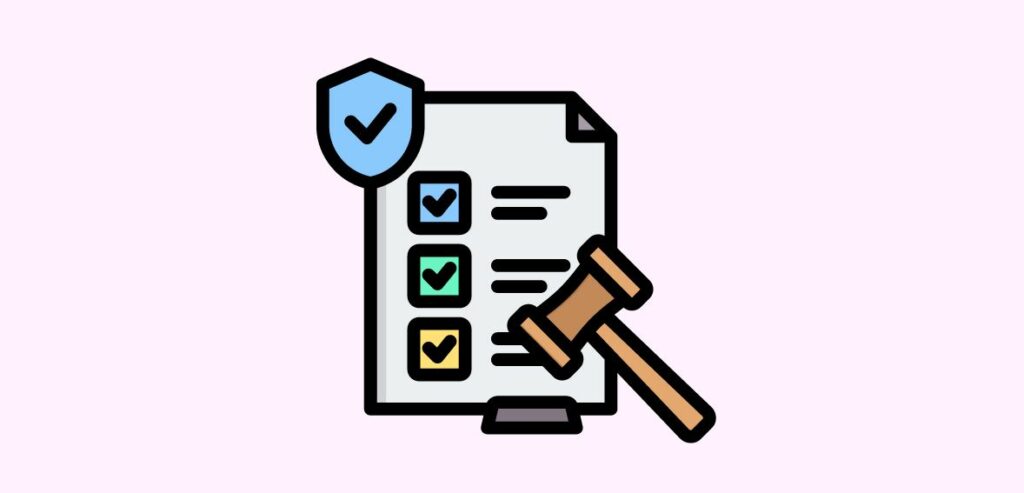Over the past few years, the cloud’s expansion has quickened. In fact, according to Gartner research, the global market for public cloud services expanded 18% in 2017, and cloud adoption strategies will impact more than 50% of ITO sales in 2020. Since complying with intricate industry rules like the HIPAA (Health Insurance Portability and Accountability Act) can be challenging, many healthcare companies and business partners opt for compliance-as-a-service (CaaS). In this article, we will discuss the benefits and drawbacks of CaaS and the reasons it might be a wise decision for your company.
What is Compliance-as-a-Service?

A novel idea called compliance as a service (CaaS) turns the compliance function from a cost center into a profit center. This is accomplished by offering clients compliance services. Providing various independent compliance services expands the typical breadth of ethics and compliance programs to draw clients and secure service proposals. With this strategy, the compliance officer’s main goal is to support sales efforts, which are now crucial to businesses during the pandemic, rather than to prevent losses from fraud, fines, and other issues.
Clients with strict regulations and high standards for quality are typically open to CaaS solutions. Tasks related to compliance can be transferred into these industries’ value chains and outsourced. To achieve this, they either contract a new independent service or pay a premium over the cost of their existing contracts. Evaluating a CaaS endeavor may enhance the board’s understanding of the compliance officer’s job, depending on the effectiveness of the compliance program and its resources. To facilitate an independent review, it’s crucial to determine which compliance tasks could already be incorporated into currently implemented continuing services.
Nobody who uses the solution has ever failed an audit, claims Compliancy Group! Here are some excellent features of the remedy:
- Vendor management, where you may enter business partners, upload the contract, and have proof of your agreements.
- An all-staff member-accessible user interface with areas for finding assigned work, reporting incidents, and accessing documents.
- Dashboards allow you to view incidents, remediation efforts, compliance gaps, and overall compliance strategy.
- Document management software enables you to keep an extensive collection of security and privacy policies and other compliance-related documents.
- Incident management, where you may monitor incidents, conduct investigations, and if an incident is proven, remediation is required.
How Does Compliance as a Service Work?

The first stage in a CaaS campaign is identifying strategic clients with the financial resources to spend more on their contracts for these services. The compliance officer must be aware of these clients’ expectations, risks, and compliance requirements to decide whether these responsibilities’ internal performance is feasible or CaaS initiatives are required.
The compliance officer then lists success stories, services, growth statistics, and established procedures to support their sales presentation. By agreeing to a higher volume of transactions, this plan aims to boost efficiency, realize economies of scale, and promote standardization.
After creating the proposal, the compliance officer gives the client precise illustrations of deliverables and dashboards. The language of compliance provisions must be precise during discussions and while preparing the contracts to ensure that the transfer of responsibilities is crystal clear.
The contract should include a list of compliance requirements with attributes and opportunities to decrease disagreements. Finally, the compliance officer must communicate the critical controls to the internal staff impacted by the contract and the client.
During the execution of a CaaS contract, controls performed on behalf of the customer must be appropriately organized and recorded. Additionally, regular meetings should be held between the compliance officer, client, and contract managers to review metrics, exceptions, and trends relating to control compliance. As with any contract, prompt disclosure to the customer of any potential risks of non-compliance is necessary to maintain high levels of cooperation and confidence.
Compliance as a service is an important endeavor that is frequently overlooked on the compliance agenda. The following year will be necessary for maintaining profitability and concentrating support activities on outside sales.
Types of Compliance as a Service

The following are some examples of cybersecurity compliance as a service:
PCI DSS Compliance refers to the adherence to the Payment Card Industry Data Security Standard (PCI DSS), a set of guidelines developed to ensure that companies that accept, process, store, or transmit credit card information maintain a secure environment. This standard is crucial for protecting cardholder data and reducing the risk of data breaches and fraud in payment transactions.
For businesses, achieving PCI DSS compliance involves meeting specific security requirements, including encrypting cardholder data transmission across open, public networks, maintaining a secure network through firewalls, and regularly updating antivirus software. Additionally, companies must restrict access to cardholder data to only those employees who need it to perform their job functions. By following these standards, businesses protect themselves and their customers from the risks associated with data breaches and build trust and credibility in their market. Compliance is regularly checked through self-assessments and third-party audits, ensuring that security measures remain up-to-date and effective.
- HIPAA Compliance
HIPAA Compliance involves adhering to the standards set by the Health Insurance Portability and Accountability Act (HIPAA), which was established to protect the privacy and security of certain health information. Primarily, it sets the framework for safeguarding medical information and ensuring patients’ privacy rights in handling their health data.
To achieve HIPAA compliance, healthcare providers, insurance companies, and businesses that handle personal health information must implement several administrative, physical, and technical safeguards. These measures include securing electronic health records, controlling access to health data, and conducting regular employee training on handling sensitive information appropriately. Compliance also requires that these entities have protocols for dealing with data breaches, including timely notification to affected individuals. Maintaining HIPAA compliance is essential not only for protecting patient privacy but also for preserving the integrity and trustworthiness of healthcare institutions. Regular assessments and updates to security protocols are crucial to adapt to new threats and technological changes.
- SOC 2 Compliance
SOC 2 Compliance is a framework designed to ensure service organizations manage data securely and protect the interests and privacy of their clients. Developed by the American Institute of CPAs (AICPA), SOC 2 focuses on non-financial reporting controls related to security, availability, processing integrity, confidentiality, and system privacy. Compliance with these criteria is essential for companies that store customer data in the cloud, assuring customers and stakeholders about the company’s security measures.
To achieve SOC 2 compliance, organizations must undergo a rigorous audit that evaluates their systems and processes against the specified Trust Service Criteria. This involves implementing and maintaining stringent security policies and procedures that govern data protection practices, such as encrypting data at rest and in transit, enforcing access controls, and continuously monitoring the environment. Organizations must also demonstrate effective mechanisms for identifying and responding to security breaches and vulnerabilities. Successfully meeting SOC 2 standards enhances a company’s security posture and strengthens its reputation by demonstrating a commitment to high-level data security and management practices.
- ISO 27001 Compliance
ISO 27001 Compliance relates to adhering to the standards outlined in ISO 27001, an international framework for managing information security. This standard provides requirements for an information security management system (ISMS), enabling organizations to manage the security of assets such as financial information, intellectual property, employee details, or information entrusted by third parties. ISO 27001 is designed to help organizations establish and maintain a systematic and proactive approach to managing security risks to their information systems.
Achieving ISO 27001 compliance requires organizations to perform a comprehensive risk assessment and implement measures addressing the identified vulnerabilities. This includes developing security policies, implementing suitable physical and technical controls, and conducting regular staff training to ensure ongoing awareness and compliance. Additionally, organizations must continuously monitor and regularly review the ISMS to ensure its effectiveness and compliance with the changing landscape of threats and vulnerabilities. Successfully complying with ISO 27001 secures information more effectively and demonstrates to clients and partners that the organization is committed to best practices in information security.
- GDPR (General Data Protection Regulation) Compliance
GDPR (General Data Protection Regulation) Compliance refers to the adherence to the regulations set forth by the European Union to protect the personal data and privacy of its citizens. Enforced since May 2018, GDPR has implications for businesses and organizations worldwide that process the personal data of individuals residing in the EU. This regulation is designed to give individuals control over their data and simplify the regulatory environment for international business by unifying the regulation within the EU.
To achieve GDPR compliance, organizations must handle personal data transparently, securely, and with the necessary consent. This involves implementing data protection measures covering the entire data processing lifecycle, from initial collection to eventual disposal. Organizations must also ensure they have legal grounds for processing personal data, provide transparent information about data usage to individuals, and allow them easy access to their data. In data breaches, GDPR mandates timely notification to the affected individuals and the relevant regulatory authorities. Compliance with GDPR helps protect sensitive data and builds trust with customers by enhancing the organization’s reputation for respecting privacy rights and commitments.
- NIST Cybersecurity Framework Compliance
NIST Cybersecurity Framework Compliance involves aligning organizational practices with the National Institute of Standards and Technology’s (NIST) Cybersecurity Framework guidelines. This voluntary framework provides a policy framework of computer security guidance for how private sector organizations in the U.S. can assess and improve their ability to prevent, detect, and respond to cyber-attacks. It’s widely respected and utilized globally due to its comprehensive and flexible nature, which applies to organizations of all sizes and types.
To comply with the NIST Cybersecurity Framework, organizations typically undertake a series of steps, beginning with identifying their current cybersecurity posture and the data they need to protect. They then assess the risks to their systems and data to prioritize their cybersecurity efforts effectively. Based on this risk assessment, organizations develop and implement a plan to protect their critical infrastructure using the framework’s core functions: Identify, Protect, Detect, Respond, and Recover.
This includes setting up appropriate safeguards to ensure service delivery, detecting and responding to cybersecurity events, and maintaining plans for resilience and recovery. Regularly reviewing and updating the cybersecurity practices by the NIST Framework ensures ongoing protection and compliance, helping organizations manage and reduce their risk and strengthen their defense mechanisms against cyber threats.
These are only a few instances of the various compliance as a service option. The industry and the sorts of data that a business manages will determine the precise specifications of a compliance solution.
Benefits of Compliance as a Service
Many cloud service providers are becoming aware of the need to offer their users services that comply with regulations. Many organizations are also turning to cloud providers to comply with specific standards. Here are some explanations:
- Simplifies the Process
As was previously said, there is no need to go through the bother of keeping track of every compliance-related issue when you can sign up for a service that comes pre-built with behaviors based on regulatory guidelines. This covers the required encryption levels and the kinds of data that require concealment and additional security. Additionally, it simplifies the compliance process because most cloud service providers offer tools and education to assist organizations in streamlining management through their legal and regulatory duties.
- Automatic Updates
Compliance as a Service provider must stay current with the constantly evolving rules and specifications their service attempts to follow. To stay compliant, they modify their service in response to these changes. If you were a subscriber to the service, you wouldn’t need to worry about updating your system to reflect these changes because the cloud provider will automatically distribute the updates to all users.
- Configurable
Compliance as a Service product typically allows for customization rather than system development from scratch. This implies that you can customize the service according to your company’s needs and the regulations you want to comply with. This spares your firm the effort, time, and money required to maintain compliance with the shifting business needs and regulatory landscape.
Over time, compliance systems are in charge of administering and automatically renewing their cloud services. These cloud service providers permit companies to utilize their products with behavior that has been pre-configured to comply with a set of rules or standards.
The supplier will be responsible for modifying these services following any changes to financial legislation. By reducing the need for administrative overhead, Compliance as a service can help firms save millions of dollars over the years.
Disadvantages of CaaS
- Cloud service consumers will be held accountable for any problems with compliance services. To ensure there are no problems, customers must validate the compliance services.
- As a service provider, it is impossible to comply with all the laws in every nation. Additionally, because all services are cloud-based, there is always a chance that providers will stop offering them at any point due to a lack of demand. End-user and organizations depend on service providers as a result. These are a few essential factors that constitute CaaS’s downsides in general.
How to Handle Privacy Issues with CaaS?
Two main approaches dominate the market:
- Coaching: The largest firms employ a coaching approach in which employees are initially guided by a team of professionals and taught competencies before being educated and forced to absorb the activity.
- Total outsourcing: Smaller companies choose to completely outsource compliance (with a few exceptions), which helps them build a strong trusting relationship with the adviser company.
How Can Outsourcing Compliance Help?
The ultimate objective of this third-party security compliance solution is to reduce a business’s risk. We’ve seen that outsourcing security compliance obligations will reduce an organization’s compliance overload by giving compliance management responsibilities to a third party with the resources necessary to satisfy regulatory standards more economically.
Conclusion
Pursuing compliance as a service for your business may provide you and your team with financial benefits and relief. Since CaaS providers manage critical information about your organization and clients, finding a trustworthy service provider to respect compliance and protect your data is crucial.
Searching for a CaaS provider that can satisfy your organization’s needs is essential, primarily if you work in a specialized industry like banking or healthcare.

